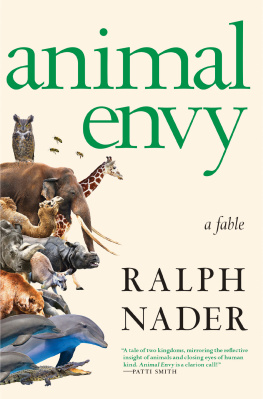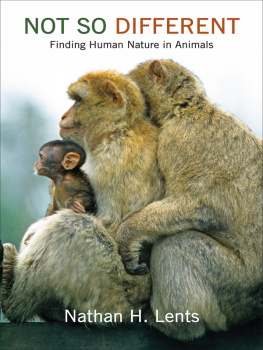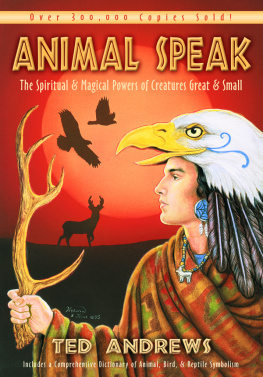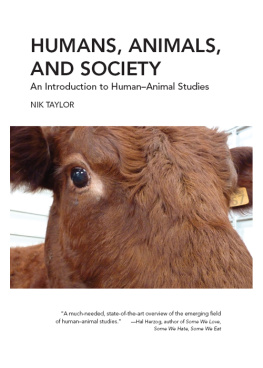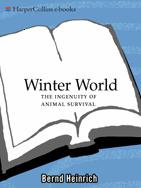ALSO BY BARBARA NATTERSON-HOROWITZ AND KATHRYN BOWERS
Zoobiquity: The Astonishing Connection Between Human and Animal Health
ONE
Dr. House, Meet Doctor Dolittle
Redefining the Boundaries of Medicine
In the spring of 2005, the chief veterinarian of the Los Angeles Zoo called me, an urgent edge to his voice.
Uh, listen, Barbara? Weve got an emperor tamarin in heart failure. Any chance you could come out today?
I reached for my car keys. For thirteen years Id been a cardiologist treating members of my own species at the UCLA Medical Center. From time to time, however, the zoo veterinarians asked me to weigh in on some of their more difficult animal cases. Because UCLA is a leading heart-transplant hospital, Id had a front-row view of every type of human heart failure. But heart failure in a tamarina tiny, nonhuman primate? That Id never seen. I threw my bag in the car and headed for the lush, 113-acre zoo nestled along the eastern edge of Griffith Park.
Into the tiled exam room the veterinary assistant carried a small bundle wrapped in a pink blanket.
This is Spitzbuben, she said, lowering the animal gently into a Plexiglas-fronted examination box. My own heart did a little ip. Emperor tamarins are, in a word, adorable. About the size of kittens, these monkeys evolved in the treetops of the Central and South American rain forests. Their wispy, white Fu Manchustyle mustaches droop below enormous brown eyes. Swaddled in the pink blanket, staring up at me with that liquid gaze, Spitzbuben was pushing every maternal button I had.
When Im with a human patient who seems anxious, especially a child, I crouch close and open my eyes wide. Over the years Ive seen how this can establish a trust bond and put a nervous patient at ease. I did this with Spitzbuben. I wanted this defenseless little animal to understand how much I felt her vulnerability, how hard I would work to help her. I moved my face up to the box and stared deep in her eyesanimal to animal. It was working. She sat very still, her eyes locked on mine through the scratched plastic. I pursed my lips and cooed.
Sooo brave, little Spitzbuben...
Suddenly I felt a strong hand on my shoulder.
Please stop making eye contact with her. I turned. The veterinarian smiled stify at me. Youll give her capture myopathy.
A little surprised, I did as instructed and got out of the way. Human-animal bonding would have to wait, apparently. But I was puzzled. Capture myopathy? Id been practicing medicine for almost twenty years and had never heard of that diagnosis. Myopathy, surethat simply means a disease that affects a muscle. In my specialty, I see it most often as cardiomyopathy, a degradation of the heart muscle. But what did that have to do with capture?
Just then, Spitzbubens anesthesia took effect. Time to intubate, the attending veterinarian instructed, focusing every person in the room on this critical and sometimes difficult procedure. I pushed capture myopathy out of my mind to be fully attentive to our animal patient.
But as soon as we were finished and Spitzbuben was safely back in her enclosure with the other tamarins, I looked up capture myopathy. And there it wasin veterinary textbooks and journals going back decades. There was even an article about it in Nature , from 1974. Animals caught by predators may experience a catastrophic surge of adrenaline in their bloodstreams, which can poison their muscles. In the case of the heart, the overow of stress hormones can injure the pumping chambers, making them weak and inefficient. It can kill, especially in the case of cautious and high-strung prey animals like deer, rodents, birds, and small primates. And there was more: locking eyes can contribute to capture myopathy. To Spitzbuben, my compassionate gaze wasnt communicating, Youre so cute; dont be afraid; Im here to help you. It said: Im starving; you look delicious; Im going to eat you.
Though this was my first encounter with the diagnosis, parts of it were startlingly familiar. Cardiology in the early 2000s was abuzz with a newly described syndrome called takotsubo cardiomyopathy. This distinctive condition presents with severe, crushing chest pain and a markedly abnormal EKG, much like a classic heart attack. We rush these patients to an operating suite for an angiogram, expecting to find a dangerous blood clot. But in takotsubo cases, the treating cardiologist finds perfectly healthy, clean coronary arteries. No clot. No blockage. No heart attack.
On closer inspection, doctors notice a strange, lightbulb-shaped bulge in the left ventricle. As the pumping engines for the circulatory system, ventricles must have a particular ovoid, lemonlike shape for strong, swift ejection of blood. If the end of the left ventricle balloons out, as it does in takotsubo hearts, the firm, healthy contractions are reduced to inefficient spasmsoppy and unpredictable.
But whats remarkable about takotsubo is what causes the bulge. Seeing a loved one die. Being left at the altar or losing your life savings with a bad roll of the dice. Intense, painful emotions in the brain can set off alarming, life-threatening physical changes in the heart. This new diagnosis was proof of the powerful connection between heart and mind. Takotsubo cardiomyopathy confirmed a relationship many doctors had considered more metaphoric than diagnostic.
As a clinical cardiologist, I needed to know how to recognize and treat takotsubo cardiomyopathy. But years before pursuing cardiology, I had completed a residency in psychiatry at the UCLA Neuropsychiatric Institute. Having also trained as a psychiatrist, I was captivated by this syndrome, which lay at the intersection of my two professional passions.
That background put me in a unique position that day at the zoo. I reexively placed the human phenomenon side by side with the animal one. Emotional trigger... surge of stress hormones... failing heart muscle... possible death . An unexpected aha! suddenly hit me. Takotsubo in humans and the heart effects of capture myopathy in animals were almost certainly related perhaps even the same syndrome with different names .
But a second, even stronger insight quickly followed this aha. The key point wasnt the overlap of the two conditions. It was the gulf between them. For nearly four decades (and probably longer) veterinarians had known this could happen to animalsthat extreme fear could damage muscles in general and heart muscles in particular. In fact, even the most basic veterinary training includes specific protocols for making sure animals being netted and examined dont die in the process. Yet here were the human doctors in early 2000 trumpeting the finding, savoring the fancy foreign name, and making academic careers out of a discovery that every vet student learned in the first year of school. These animal doctors knew something we human doctors had no clue existed. And if that was true... what else did the vets know that we didnt? What other human diseases were found in animals?
So I designed a challenge for myself. As an attending physician at UCLA I see a wide variety of maladies. By day on my rounds, I began making careful notes of the conditions I came across. At night, I combed veterinary databases and journals for their correlates, asking myself a simple question: Do Animals Get [ fill in the disease ]?
I started with the big killers. Do animals get breast cancer? Stress-induced heart attacks? Leukemia? How about melanoma? Fainting spells? Chlamydia? And night after night, condition after condition, the answer kept coming back yes. The similarities clicked into place.
Jaguars get breast cancer and may carry the BRCA1 genetic mutation that predisposes many Jews of Ashkenazi descent and others to the disease. Rhinos in zoos get leukemia. Melanoma has been diagnosed in the bodies of animals from penguins to buffaloes. Western lowland gorillas die from a terrifying condition in which the bodys biggest and most critical artery, the aorta, ruptures. Torn aortas also killed Lucille Ball, Albert Einstein, and the actor John Ritter, and strike thousands of less famous human beings every year.
Next page


